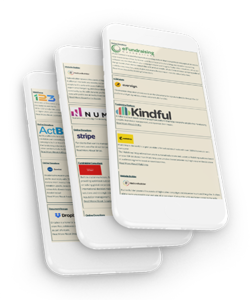How to file a compliance report for Oregon:
1. Create and download your report. Run your report by selecting Reports>Compliance from the drop down menu at the top of your ISPolitical screen. Then enter your dates:
a. Your “From Date” should be on or before the first transaction entered for your committee.
b. Your “To Date” should be the date you run the report.
c. At the bottom of the report screen, click on [Generate]
d. If there are Errors & Warnings, click on each link and address the issues.
e. Repeat until there are no more Errors and Warnings.
f. Now, download the file by clicking on [Download]
g. If you are using Chrome as a browser, you will see something like this:
h. Open your file manager to the folder where you will store your reports, then drag the file to your file folder. (click-and-hold the right mouse on the file and drag to the directory.)
2. Log in to ORESTAR and Upload your file.
a. To log into ORESTAR go to www.oregonvotes.gov, and click on Log in under the ORESTAR logo.
b. Enter your user name and password. Click on Login again. If you do not have a user name, select Sign Up now and follow the instructions for creating a user account.
c. If the application management page appears, click on ORESTAR (Elections Reporting) under the Applications heading as shown below:
d. When ORESTAR opens, the Private Workshop page displays the active filers authorized to your account. In the left navigation menu, clicking on Private Workshop will expand options to display Active Committee/Filers, Discontinued Committees, Candidacy Filings, and Voters’ Pamphlet Filings links.
e. From the Active Committee/Filers page of Private Workshop, the user sees the active filers that the user can access. The campaign finance portion of ORESTAR is accessed by clicking the Campaign Financebutton to the right of the filer name on the Active Filers page.
f. Once in the Campaign Finance module from the Private Workshop page, a tab menu at the top allows a user to navigate within the system.
g. Click on the Upload Xml tab:
h.Click on the Browse button. A window will open to search for the file on the user’s computer.
i. Select the XML file to upload and click Open. The dialog box will close and the file name will display on the Upload Xml page.
j. Click Upload.
k. The uploaded file is validated to ensure it meets the XML file format specifications. An error message “Invalid XML File” will appear if the file was not uploaded because it did not comply with the format specifications. Contact ISPolitical support for assistance if this happens.
l. After the file passes the XML file validation, the transactions are uploaded into ORESTAR and a second level of validation is performed on the data contained in the file.
m. An email with “XML Validation” in the subject line is sent to the candidate, treasurer, alternate transaction filer, correspondence recipient and vendor, if applicable. The report contains a list of transaction in the XML file and identifies validation errors, if any, associated with each transaction. The report also informs the user if transactions were successfully saved to ORESTAR. The report can also be accessed by clicking on the Documents tab in the committee’s account.
n. The uploaded transactions display in the committee’s Transaction Queue ready for filing by the candidate, treasurer or alternate transaction filer of the committee.
NOTE: Uploaded transactions should not be amended directly in ORESTAR. If data is changed after it is uploaded, the original data will be out of sync with the data in ORESTAR. This could cause problems with any subsequent amendments.
3. File the report in ORESTAR
a. To file a report, go to the Transactions tab.
b. To file the transactions from the Transaction Queue page, check the box to the left of the transaction ID #. To select all transactions in the queue, check the box in the column heading to the left of ID#.
c. Click File or File/Due. “File” files the transaction immediately. Then using “File When Due” the transaction will not be filed until the system calculated due date – approximately one hour before the 11:59:00 PM statutory deadline.
d. The Attestation page opens. Only candidates, treasurers, alternate transaction filers, and independent expenditure filers can file transactions.
e. Read the attestation statement and if agreed, click on the File button.
f. The user returns to the Transaction Queue page and the field transactions no longer display in the queue. Field transactions can be found through the Search feature.
g. After the transactions are filed, an email is sent to the candidate, treasurer, alternate transaction filer, correspondence recipient, and independent expenditure filer, where applicable. The email subject line is “Filing Complete” and includes a PDF attachment of the Transaction Filing Report. This report contains a list of the filed transactions and includes any validation errors/messages associated with each transaction. Other users associated with a committee, including a data entry person or vendor, can also access this report by clicking on the Documents tab.
Note: if clicking the File/Due button, a Transaction Filing Report will be generated and emailed after ORESTAR automatically files the transaction on its due date.
4. Mark report as filed on ISPolitical
a. Return to the ISPolitical page where you generated your report.
b. After all the transactions have been accepted by ORESTAR, click Mark As Filed.
c. You have now completed the filing process.
NOTE: all information relating to ORESTAR was copied from the ORESTAR User’s Manual: Transaction Filing, revision 1/2017.
http://sos.oregon.gov/elections/Documents/orestarTransFiling.pdf






